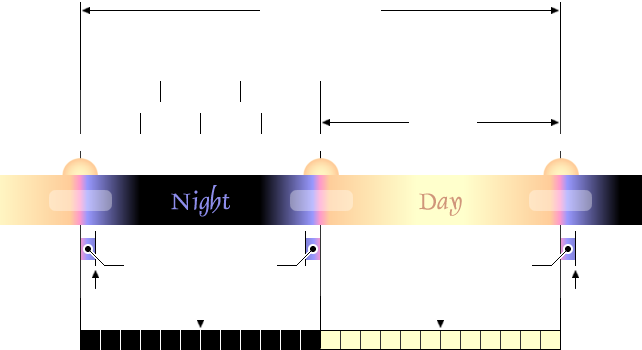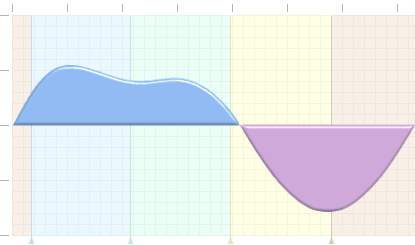|
|
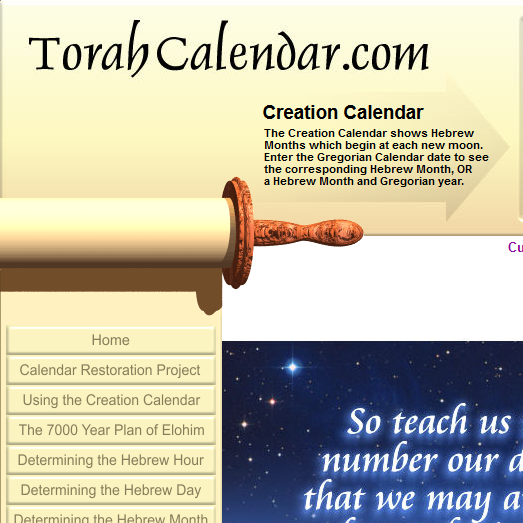


Creation Calendar
The Creation Calendar shows Hebrew 
Isaiah 53 from the Aleppo Codex











Welcome to Torahcalendar.com
The Calendar Restoration Project is a historical work in progress to restore the Creation Calendar of Scripture.
Based on the whole counsel of Scripture, it is evident that the Creation Calendar is a 7000 year calendar modeled
on the seven days of creation. It is composed of 140 Jubilee Cycles of 50 years.
From Psalm 90:4 and 2 Peter 3:8, the Scriptures teach that the Millennial Sabbath and the Age of Life with יהושע the Messiah will begin after 6000 Years since the true epoch of creation. We believe the Sabbaths, New Moons, Appointed Times and Festivals of יהוה have been correctly restored. We also believe that this site correctly teaches how to determine the Hebrew Hour, Hebrew Day, Hebrew Month and Hebrew Year. We are watching, hoping, and praying that the Messiah will come soon. The final goal of the Calendar Restoration Project is to successfully determine the true epoch of creation. יהושע the Messiah is not delaying His coming. יהושע will come on time. We must all keep watching as the Master has said, to see something many have longed to see - the resurrection of the just. By entering this website you acknowledge that the date posted for the epoch of creation is provisional, and is conditional upon historical proof which is not yet published. Determining the Hebrew HourA Hebrew Hour is defined as 1/12 of the time between sunset and sunrise, or 1/12 of the time between sunrise and sunset. The only Scriptural reference to there being 12 Hebrew Hours in a Hebrew Day is found in John 11:9 where יהושע the Messiah asked a famous question, "Are there not 12 hours in a day?" The diagram below is a working timepiece where the sun's position indicates the current Hebrew Hour at Jerusalem. One Hebrew Hour ends and another begins when the center of the sun crosses an hour line. Live Jerusalem Time 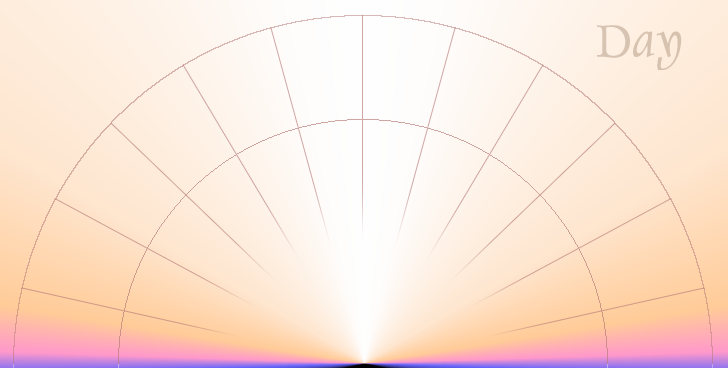
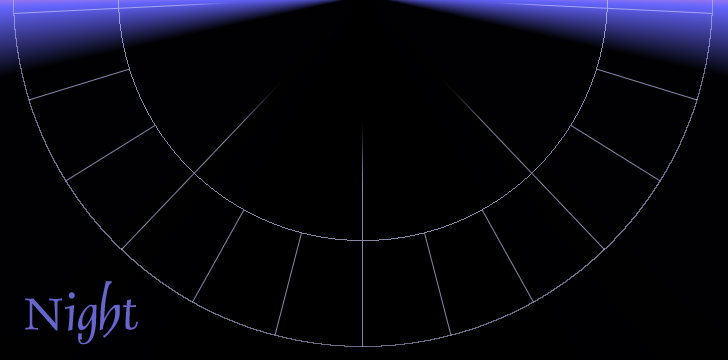
Mid Day
1st
2nd
3rd
4th
5th
6th
7th
8th
9th
10th
11th
12th Mid Night
1st
2nd
3rd
4th
5th
6th
7th
8th
9th
10th
11th
12th
First
Second
Third
Fourth x until next Hebrew Hour y z This live time clock shows the current Scriptural Hebrew Hour in Jerusalem based on the instantaneous position of the sun as it would be seen there. The dark area represents Night, and the light area represents Day. As the sun's disk moves in a clockwise motion, the current Hebrew Hour is indicated. One Hebrew Hour ends and another Hebrew Hour begins at the moment the center of the sun's disk crosses an hour line. The Night Watches for the Age of the Messiah are also shown. The Torah, the Prophets and the Writings do not number specific Hebrew Hours. Only the Messianic Scriptures number specific Hebrew Hours in Matthew, Mark, Luke and Acts. The third hour of the day is referred to in Matthew 20:3-4, Mark 15:25 and Acts 2:15. The third hour of the night is referred to in Acts 23:23-24. The sixth hour of the day is referred to in Matthew 20:5, 27:45, Mark 15:33, Luke 23:44 and Acts 10:9. The ninth hour of the day is referred to in Matthew 20:5, 27:45, 27:46, Mark 15:33, 15:34, Luke 23:44, Acts 3:1, Acts 10:3 and Acts 10:30-31. The eleventh hour of the day is referred to in Matthew 20:6 and Matthew 20:9. 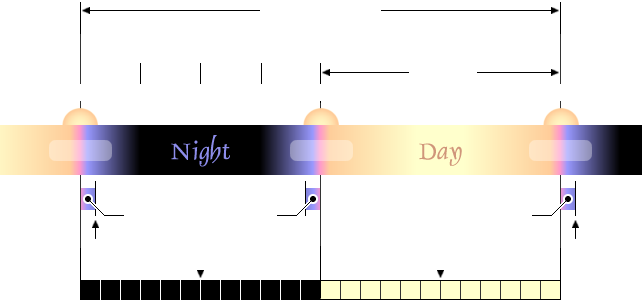
A Typical Hebrew Day One Hebrew Day
Genesis 1:5 Elohim called the light Day and the darkness
He called Night. 12 Hours
John 11:9 Are there not
First
Second
Third
Fourth Sunset Evening
"Twinkling of an eye" Sunrise Morning Sunset Evening
Evening
"Twinkling of an eye"
Morning
Between the בין הערבים (Evening Twilight) 1 1 2 2 3 3 4 4 5 5 6 6 7 7 8 8 9 9 10 10 11 11 12 12 Mid-day Hebrew Day Hours Mid-night Hebrew Night Hours A Hebrew Day consists of 12 Hebrew Night Hours and 12 Hebrew Day Hours. The midpoint of the 12 Hebrew Night Hours is called Mid-night. The moment of Mid-night occurs exactly halfway between sunset and sunrise separating the sixth and seventh Hebrew Night Hours. The midpoint of the 12 Hebrew Day Hours is called Mid-day. The moment of Mid-day occurs exactly halfway between sunrise and sunset separating the sixth and seventh Hebrew Day Hours. An easy way to measure Day Hours is by using an equiangular sundial marked with 12 divisions. In the Creation Calendar, Hebrew Hours begin at sunrise and sunset. A Hebrew Hour occurring between sunset and sunrise is called a Hebrew Night Hour. A Hebrew Hour occurring between sunrise and sunset is called a Hebrew Day Hour. Sunset occurs and the First Watch begins exactly at the beginning of the first Hebrew Night Hour. The Second Watch begins exactly at the beginning of the fourth Hebrew Night Hour. Mid-night occurs and the Third Watch begins exactly at the beginning of the seventh Hebrew Night Hour. The Fourth Watch begins exactly at the beginning of the tenth Hebrew Night Hour, and ends at sunrise at the end of the twelfth Hebrew Night Hour. Sunrise is always exactly at the beginning of the first Hebrew Day Hour. Mid-day occurs exactly at the end of the sixth Hebrew Day Hour. Sunset occurs exactly at the end of the twelfth Hebrew Day Hour. The duration of a Hebrew Hour varies with the season. A Hebrew Day Hour is shorter in duration during winter when a Hebrew Night Hour is longer in duration. A Hebrew Day Hour is longer in duration during summer when a Hebrew Night Hour is shorter in duration. 
A Short Hebrew Day in Winter
One Hebrew Day
First
Second
Third
Fourth 12 Hours Sunset Evening Sunrise Morning Sunset Evening 1 1 2 2 3 3 4 4 5 5 6 6 7 7 8 8 9 9 10 10 11 11 12 12 Mid-day Hebrew Day Hours Mid-night Hebrew Night Hours In this diagram, a Hebrew Day Hour is shorter in duration than a Hebrew Night Hour. This occurs in winter. The daytime hours are the shortest on the day of the winter solstice. 
A Long Hebrew Day in Summer One Hebrew Day
First
Second
Third
Fourth 12 Hours Sunset Evening Sunrise Morning Sunset Evening 1 1 2 2 3 3 4 4 5 5 6 6 7 7 8 8 9 9 10 10 11 11 12 12 Mid-day Hebrew Day Hours Mid-night Hebrew Night Hours In this diagram, a Hebrew Day Hour is longer in duration than a Hebrew Night Hour. This occurs in summer. The daytime hours are the longest on the day of the summer solstice. In contrast to Matthew, Mark, Luke and Acts, the book of John, as it now exists in the Greek manuscripts, numbers hours from midnight as the Romans did. Pilate questioned יהושע the Messiah at the sixth hour Roman reckoning according to John 19:14 which is the twelfth Hebrew Night Hour. יהושע the Messiah sat at Jacob's well at Sychar at the sixth hour Roman reckoning after a tiresome journey according to John 4:6 which is the twelfth Hebrew Day Hour. A nobleman travelled the better part of a day from Cana to Capernaum and met יהושע the Messiah at the seventh hour Roman reckoning according to in John 4:52 which is the first Hebrew Night Hour. The disciples came to the place יהושע the Messiah was staying at the tenth hour Roman reckoning and stayed with Him for the rest of that day according to John 1:39. The tenth hour Roman reckoning is the fourth Hebrew Day Hour. Although some have claimed there is no historical proof that the Romans counted the hours from midnight, such proof indeed exists. According to Gaius Plinius Secundus who lived between 23 C.E. and 79 C.E., the Roman authorities counted civil hours from midnight. Pliny the Elder, Natural History 2:77: "The very day itself men have observed in various manners. The Babylonians count the period between the two sunrises, the Athenians that between two sunsets, the Umbrians from midday to midday, the common people everywhere from dawn to dark, the Roman priests and the authorities who fix the civil day, and also the Egyptians and Hipparchus, the period from midnight to midnight." Today, the Gregorian Calendar counts civil hours from midnight similar to the way the Romans did.
|
